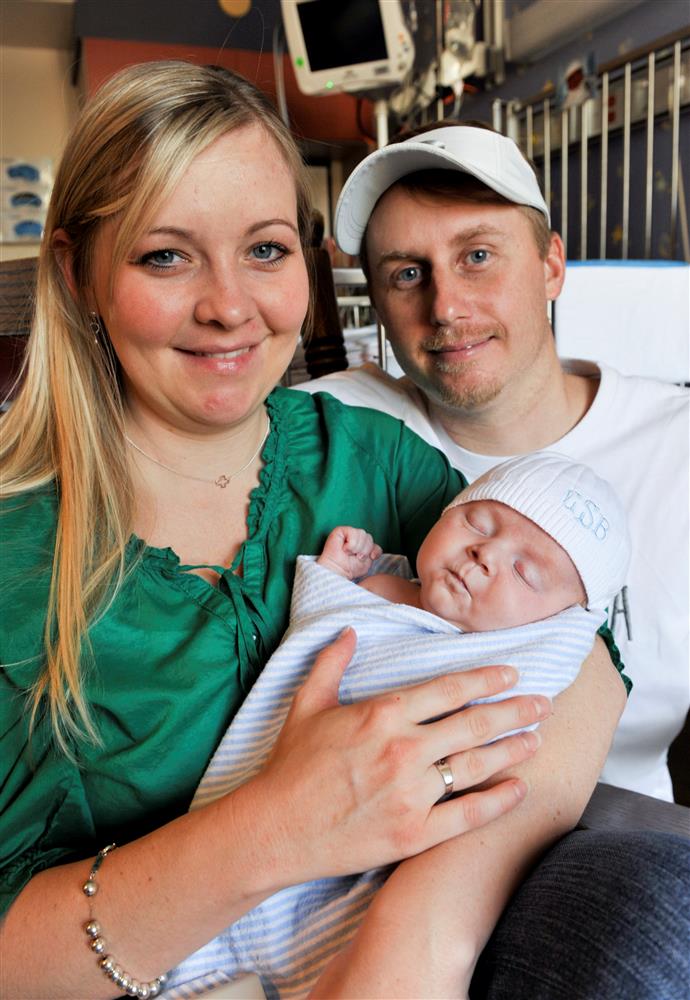Starkville infant undergoes rare Norwood procedure for heart defect at UMMC
Cayson Sanderford of Starkville is recovering well after undergoing one of the most complicated congenital heart surgeries for an infant at the Blair E. Batson Hospital for Children at the University of Mississippi Medical Center.

Dr. Jorge Salazar, director of the congenital heart program, and his team performed the Norwood procedure on Cayson at 8 days old to begin repairing a rare condition called hypoplastic left heart syndrome. This condition occurs when the left side of the heart fails to develop completely.
The left side of the heart can't effectively pump blood to the body, so the right side of the heart must pump blood both to the lungs and to the rest of the body. If left untreated, hypoplastic left heart syndrome is fatal.
Stephanie Sanderford said she noticed shortly after taking her newborn son home from the hospital that he was breathing heavily. "At first I thought I was just being paranoid. I've never been a parent before," she said.
Then, Cayson's symptoms grew worse. He wasn't eating; his skin color became ashen; and he was struggling to breathe. A trip to the family's local emergency room turned into an ambulance ride to Batson Hospital where Cayson was diagnosed with a serious heart defect.
"I remember asking the doctor what was happening, and he told me that his condition was as serious as it could get. We were scared and just shocked," Sanderford said.
Salazar said the procedure redesigns the heart connections in order for the single right ventricle to pump to the body and provide a stable connection for blood flow to the lungs.
"Now, a newborn with this type of heart defect does not need to leave the state for surgery," said Salazar, who joined UMMC in April 2010.
Cayson will need to have two more operations over the next three years, and he will need to take daily medicines and be closely followed by a pediatric cardiologist, who will determine when the second and third stage of surgery should be done.
"These procedures give Cayson the opportunity to have a normal life. Cayson will run, play, go to school, and do all things that children love to do," Salazar said.


